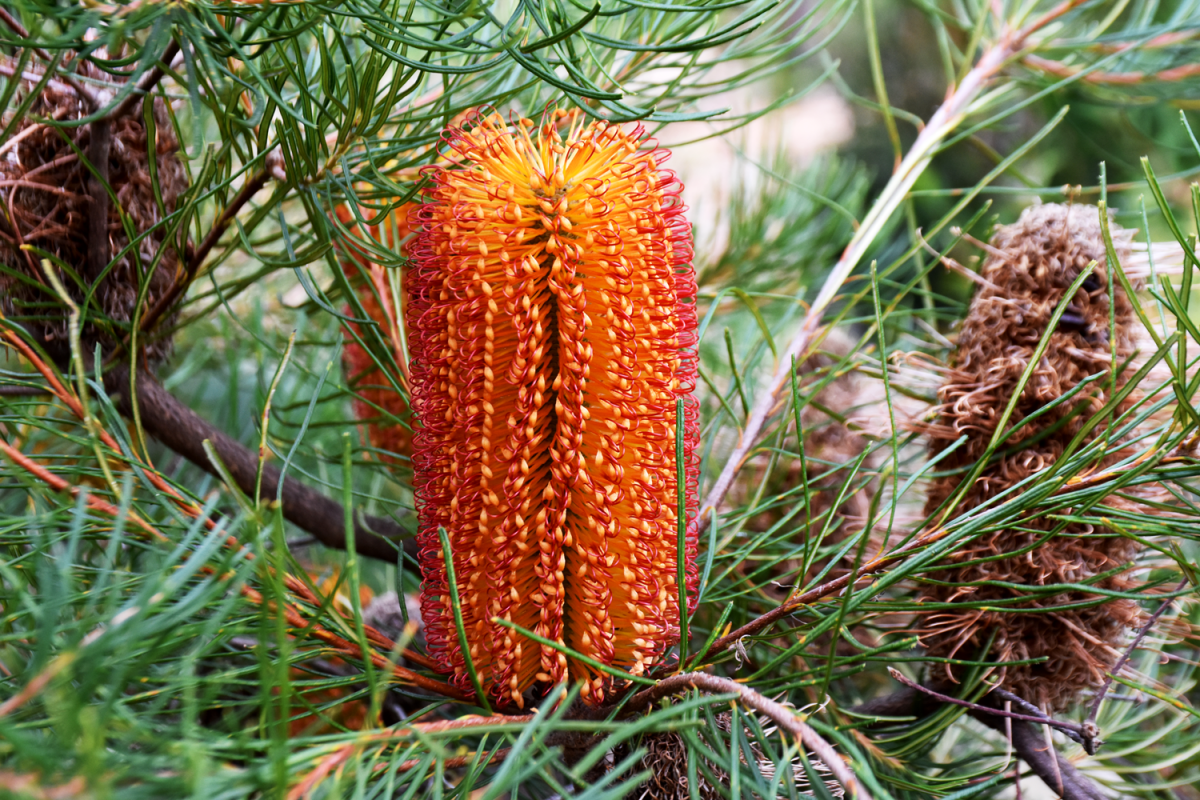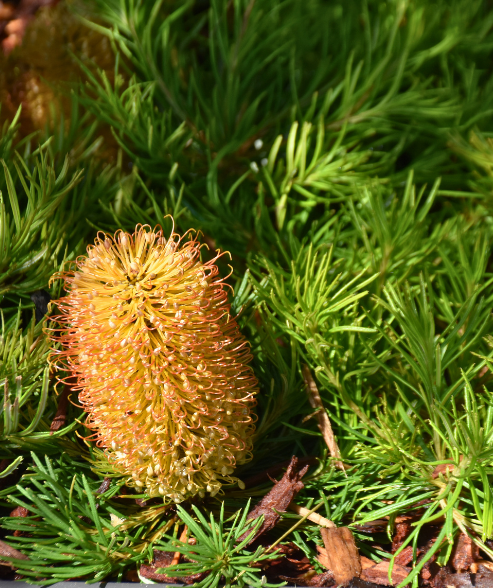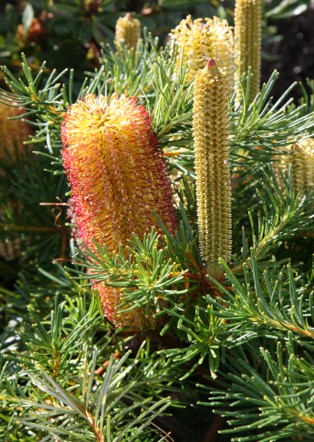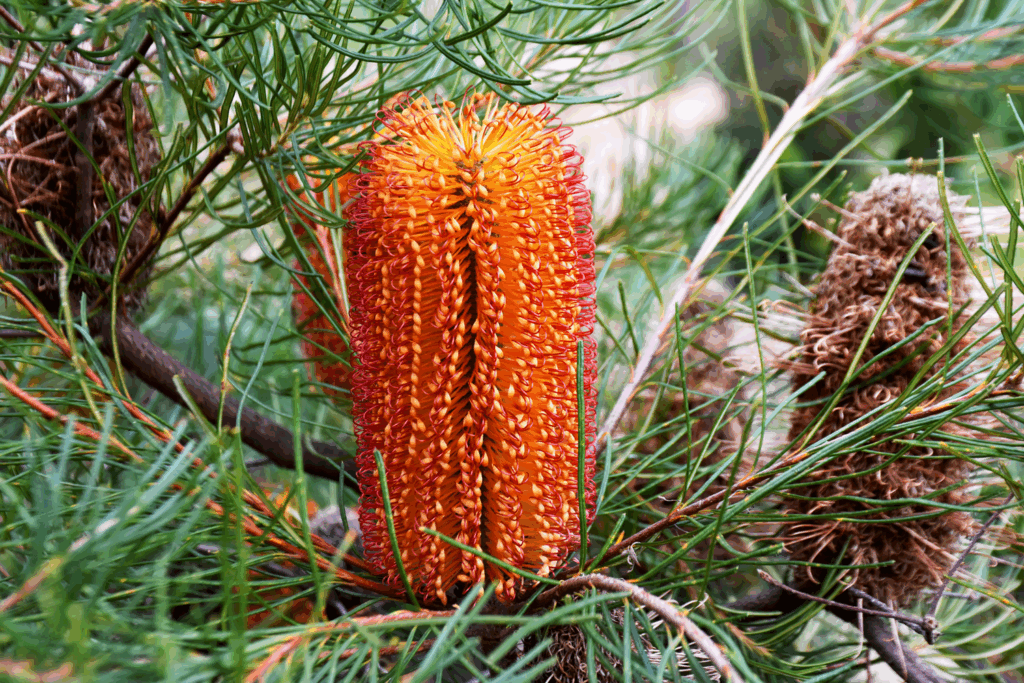Banksia Spinulosa – Nature’s Winter Torch

Let’s talk about a true gem of the Australian landscape: Banksia spinulosa, also affectionately known as the Hairpin Banksia. With its golden cylindrical flower spikes and hardy nature, this Native Australian Banksia plant doesn’t just light up gardens—it steals the spotlight. Whether you’re a seasoned green thumb or a newbie in the gardening game, Banksia spinulosa offers something for everyone. From its striking appearance to its wildlife-friendly perks, this native shrub is a must-have for Australian gardens.
But what makes this plant so special? How can you care for it, and what benefits does it bring to your outdoor space? Stick around, because we’re about to dive into everything you need to know about Native Australian Banksia plants like this golden beauty.
What is Banksia Spinulosa?
Banksia spinulosa is a member of the Proteaceae family, native to eastern Australia. Known for its resilience and stunning aesthetic, this plant thrives in a variety of environments, from coastal regions to mountainous terrains. It comes in different forms, from low-growing shrubs to taller varieties that can reach up to three meters in height.
Key Features of Banksia Spinulosa:
- Flower Spikes: Long, golden-yellow cylindrical blooms with darker styles (sometimes red or black), giving them a “hairpin” appearance.
- Leaves: Narrow, serrated, and dark green, providing a beautiful contrast to the bright flowers.
- Growth Habit: Can be compact and bushy or tall and upright, depending on the cultivar.
- Flowering Season: Typically blooms from autumn to winter, but some varieties may flower into spring.
Why Choose Banksia Spinulosa for Your Garden?
Still on the fence about adding Banksia spinulosa to your garden? These Native Australian Banksia plants provide compelling reasons for you to consider:
Visual Appeal
Those golden flower spikes are nothing short of showstoppers. They add a warm, sunny vibe to any garden, even in the cooler months, when many other plants are dormant.
Low Maintenance
Banksia spinulosa is hardy and drought-tolerant once established. It’s perfect for gardeners who love beautiful plants but don’t have hours to spend on upkeep.
Wildlife Magnet
This plant serves as a buffet for local fauna and is a prime example of Native Australian Banksia plants. It attracts nectar-loving birds, bees, and even small mammals. You’ll love the sight (and sound!) of wildlife bustling around your garden.
Versatility
Whether you’ve got a sprawling yard or a cozy balcony, there’s a Banksia spinulosa variety for you. It works beautifully as a feature plant, hedge, or even in a container.
Environmental Benefits
As an Australian native, Banksia spinulosa is well-adapted to local conditions. Growing natives like this one reduces the need for water and chemical fertilizers, making it an eco-friendly choice.
Ready to get started? Here’s a step-by-step guide to growing and maintaining your Banksia spinulosa:
How to Grow and Care for Banksia Spinulosa
1. Choose the Right Spot
- Light: Banksia spinulosa loves full sun but can tolerate partial shade.
- Soil: Well-draining, sandy or loamy soil is ideal. Avoid heavy clay soils unless you improve drainage.
2. Planting
- Dig a hole twice the width of the plant’s root ball.
- Mix some native plant fertilizer into the soil (but go easy—Banksias are sensitive to phosphorus).
- Place the plant in the hole, backfill, and water generously.
3. Watering
- Water deeply after planting to help establish roots.
- Once established, water sparingly—this drought-tolerant plant prefers dry feet.
4. Pruning
- Regularly remove spent flowers to encourage new growth.
- Lightly prune back branches to maintain shape, but avoid cutting into old wood.
5. Pests and Diseases
- Banksia spinulosa is generally pest-resistant, but watch out for root rot in poorly drained soils.
FAQs About Banksia Spinulosa
Absolutely! Choose a compact variety like ‘Birthday Candles’ and use a well-draining potting mix designed for native plants.
Less is more. A light application of native fertilizer in spring should suffice. Avoid over-fertilizing, as too much phosphorus can harm the plant.
Autumn is ideal, as it gives the plant time to establish roots before the summer heat kicks in.
It’s tricky but not impossible. Improve drainage by adding organic matter and gypsum, or consider growing your Banksia in a raised bed.
Most varieties are frost-tolerant, but young plants may need protection in colder regions.
Conclusion
There you have it—everything you need to know about the fabulous Banksia spinulosa. This golden torch of the plant world is as practical as it is beautiful, offering low-maintenance care, wildlife benefits, and year-round charm. Whether you’re looking to create a native garden, attract pollinators, or simply enjoy its sunny blooms, Banksia spinulosa won’t disappoint.
So, what are you waiting for? Get your hands dirty and give this Aussie legend a spot in your garden. Trust us—you’ll be glad you did!



Further Reading
- Learn more about the species on the Australian Native Plants Society’s Banksia spinulosa profile.
- Explore how Banksias support local birdlife with BirdLife Australia’s guide to bird-friendly gardens.
- Get inspired by large-scale native planting designs at the Royal Botanic Gardens Cranbourne.
“The first dental office
I actually like going to.”
Kuranga original content and photos are copyright protected. Please email us before re-posting our
content elsewhere. Thank you!